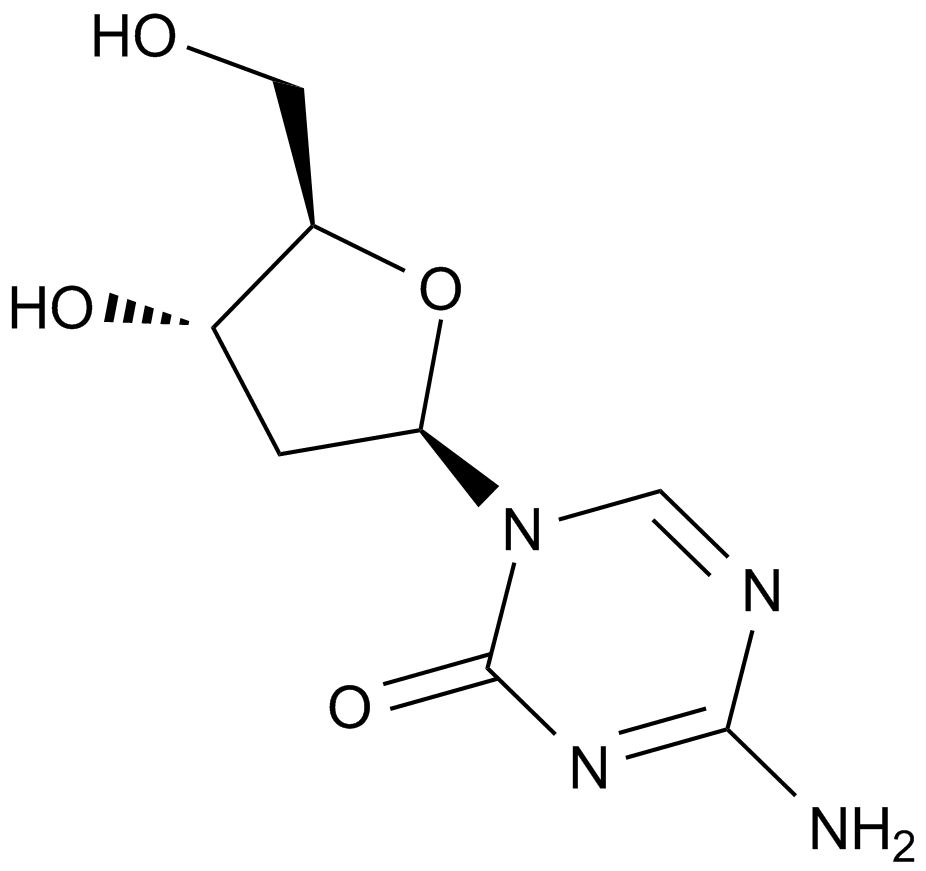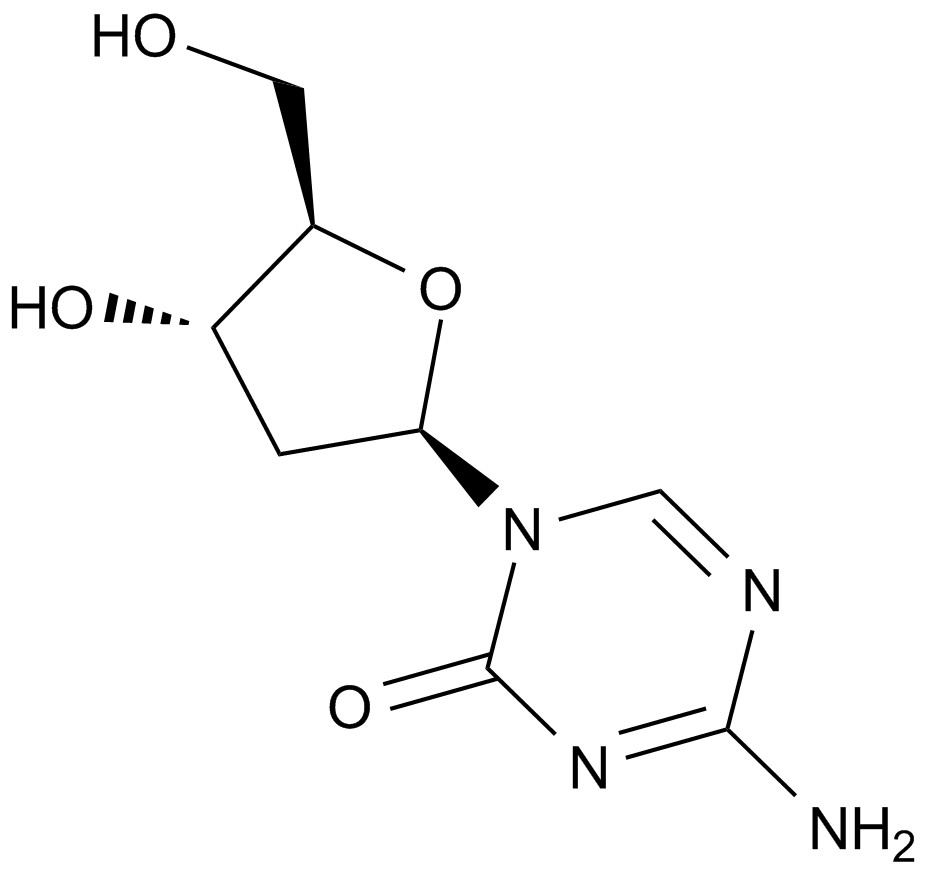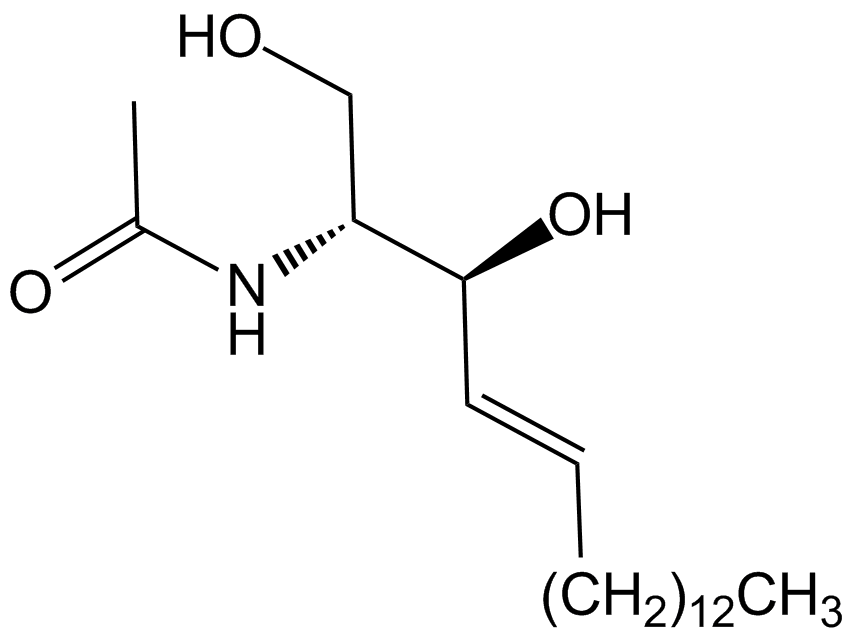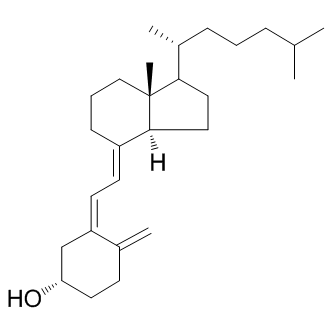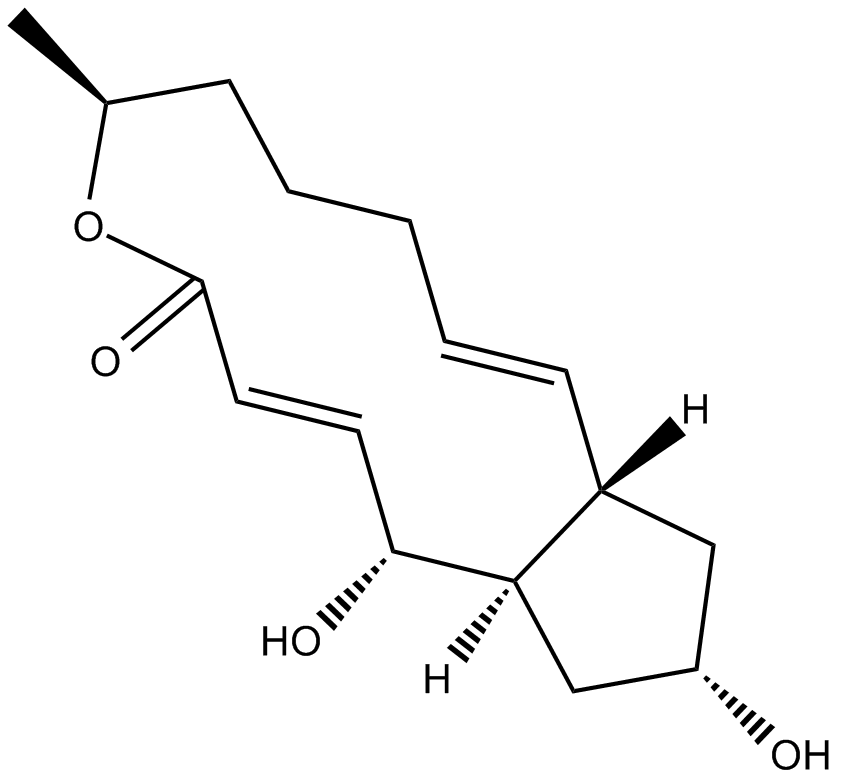Decitabine (NSC127716, 5AZA-CdR)
Decitabine (NSC127716, 5AZA-CdR; CAS 2353-33-5) is a cytidine analog that regulates gene expression through inhibition of DNA methyltransferases. Upon incorporation into DNA during replication, it covalently binds to DNA methyltransferase enzymes, leading to reduced DNA cytosine methylation. Independent of promoter methylation status, decitabine alters histone modifications, increasing histone H3 lysine 9 acetylation and histone H3 lysine 4 methylation at specific tumor suppressor gene loci, thus reactivating transcriptionally silenced genes. It is widely used in biomedical research as an epigenetic modulator, particularly in the context of hematopoietic malignancies and solid tumors.
- 1. Dandan Li, Lingyun Xia, et al. "A new high-throughput screening methodology for the discovery of cancer-testis antigen using multi-omics data." Comput Methods Programs Biomed. 2024 Jun:250:108193. PMID: 38678957
- 2. Lei Lv, Qinqin Wei, et al. "IGF2BP3 prevent HMGB1 mRNA decay in bladder cancer and development." Cell Mol Biol Lett. 2024 Mar 19;29(1):39. PMID: 38504159
- 3. Dandan Li, Lingyun Xia, et al. "Serine protease PRSS56, a novel cancer-testis antigen activated by DNA hypomethylation, promotes colorectal and gastric cancer progression via PI3K/AKT axis." Cell Biosci. 2023 Jul 3;13(1):124. PMID: 37400936
| Physical Appearance | A solid |
| Storage | Store at -20°C |
| M.Wt | 228.08 |
| Cas No. | 2353-33-5 |
| Formula | C8H12N4O4 |
| Synonyms | 5-Aza-2'-deoxycytidine; Decitabine |
| Solubility | insoluble in EtOH; ≥11.4 mg/mL in DMSO; ≥23.3 mg/mL in H2O with gentle warming |
| Chemical Name | 4-amino-1-[(2R,4S,5R)-4-hydroxy-5-(hydroxymethyl)oxolan-2-yl]-1,3,5-triazin-2-one |
| SDF | Download SDF |
| Canonical SMILES | NC(N=CN1[C@@H](C2)O[C@H](CO)[C@H]2O)=NC1=O |
| Shipping Condition | Small Molecules with Blue Ice, Modified Nucleotides with Dry Ice. |
| General tips | We do not recommend long-term storage for the solution, please use it up soon. |
| Cell experiment [1]: | |
|
Cell lines |
Human and murine melanoma cells (A375 and B16). |
|
Preparation method |
The solubility of this compound in DMSO is >10 mM. General tips for obtaining a higher concentration: Please warm the tube at 37°C for 10 minutes and/or shake it in the ultrasonic bath for a while. Stock solution can be stored below -20°C for several months. |
|
Reaction Conditions |
Decitabine 0.5 μM added on Days 1 and 4 and images are obtained on Day 8. |
|
Applications |
Decitabine decreases melanoma cell line proliferation and induces morphologic changes of differentiation. |
| Animal experiment [2]: | |
|
Animal models |
Mice bearing U2OS xenografts. |
|
Dosage form |
2.5 mg/kg intraperitoneally on Days 29, 31 and 33. On Day 37, mice are sacrificed. |
|
Preparation method |
Dissolved in saline (0.9% w/v NaCl). |
|
Applications |
Decitabine significantly reduces tumor xenograft size and lowers mitotic activity, increases the amount of apoptotic cells and bone matrix production. Decitabine also increases the expression of GADD45A, HSPA9B, PAWR, PDCD5, NFKBIA, and TNFAIP3 to ≥2-fold, which are pro-apoptotic genes [2]. |
|
Other notes |
Please test the solubility of all compounds indoor, and the actual solubility may slightly differ with the theoretical value. This is caused by an experimental system error and it is normal. |
|
References: [1] Alcazar O, Achberger S, Aldrich W, et al. Epigenetic regulation by decitabine of melanoma differentiation in vitro and in vivo. Int J Cancer, 2012, 131 (1): 18-29. [2] Al-Romaih K, Somers GR, Bayani J, et al. Modulation by decitabine of gene expression and growth of osteosarcoma U2OS cells in vitro and in xenografts: identification of apoptotic genes as targets for demethylation. Cancer Cell Int, 2007, 7: 14. |
|
Quality Control & MSDS
- View current batch:
Chemical structure
